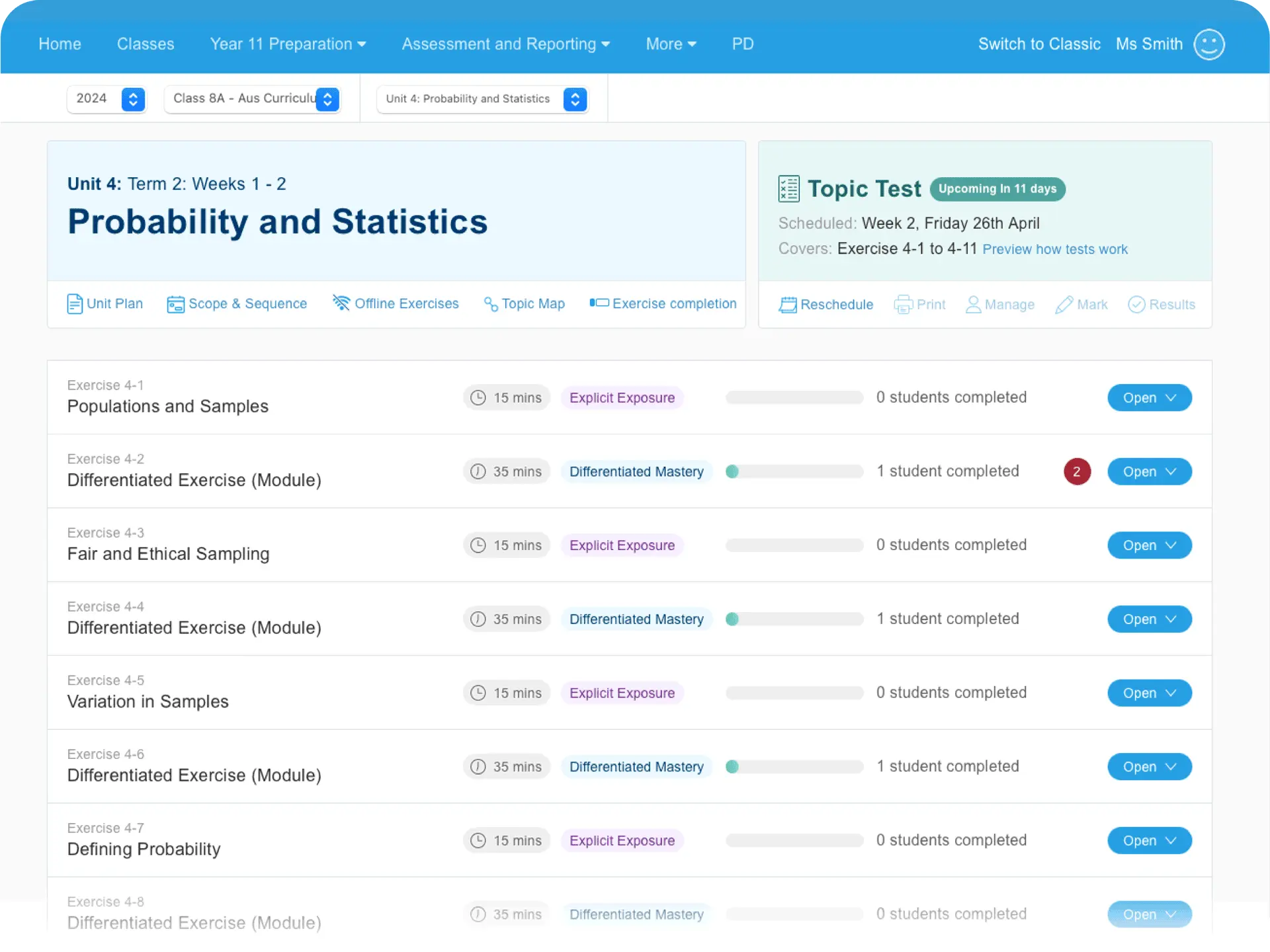Think back to early high school. Do you remember sitting in class during last period? The holidays are not too far off, you just got back from lunch, the sun’s shining on the grass out the window and the teacher’s up the front talking about sin cos and tan. The words drift near your ears, but not quite in them, and all you can think about is being out in the sin cos tan of the sun. We’ve all been there at some point in our learning journey — and countless others will follow. This is engagement. This is how much we want to learn about what’s being taught.
Now, this back-of-the-class zoning out is not a fault with the teacher, not a fault with the students, the school or even the subject matter. Rather, the fault lies with the methodology. And, this is something Concordia Lutheran College understands all too well – which is no surprise given their rich history of providing an innovative and nurturing learning environment.
For Wendy Bowen, Head of Teaching and Learning at Concordia Lutheran College, the problematic methodology of how maths was taught in our yesteryears is quite personal to her and she knew it had to change. Wendy reminisces about how “maths wasn’t really something encountered by girls”. And so, Wendy was put at the back of the class, not interacted with by the teacher, and not involved. Thus, her experience of maths was “very much a negative one”. It’s remarkable to think how different Wendy’s learning journey through maths could’ve been if the right engagement was introduced.
Accompanying engagement, another point that needs to be taken into account when discussing learning journeys, is our unique, individual perspective. Each one of us is different, and each one of us learns differently, and with that individuality comes a different placement along the fluid spectrum of mathematical knowledge. Some learners inhale maths, taking in formulas and concepts in a flash — while other learners may take a couple of lessons to form the synaptic connection they need to really grab hold of a topic. And there’s no issue with either end of the continuum, as there is no issue with those in the centre. The issue arises with ensuring engagement levels are there to meet everybody and keep them wanting to learn.
One point of reference can be a learner’s Zone of Proximal Development. Working uncomfortably outside your Zone will cull the desire to learn and engage. It’s as simple as that. Students in a one-size-fits-all classroom will suffer. The learners wanting to push forth will be bored by the content they’ve already mastered, while those struggling will just as equally turn off. And the reason they’re turning off?
Three points:
- Frustration at not knowing the answers.
- Self-consciousness at being considered ‘dumb’ by classmates
- ‘Maths anxiety’
The final point, ‘maths anxiety’, is the snowballing of struggles. It’s the big switch off where a student decides that maths simply “isn’t for them”. And, it can suppress learning and engagement in maths for good, if not addressed early.
This switch off of engagement can be especially upsetting to teachers, seeing a student they just can’t get through to. Kirsty Haslett, one of the wonderful maths teachers at Concordia Lutheran College, talks about having to “go back to her uni days” in an effort to try and understand how to power and promote engagement and re-engagement in her maths classes.
In a majority of cases, students struggling with maths and ‘switching off’ are doing so for one reason: gaps. A house without sound foundations is no house at all. And the same goes for our mathematical knowledge. How can we learn to calculate the area of a space, if we do not first understand geometry or multiplication? It’s like trying to paint a rainbow in the dark. The colours might be right in front of us, but if we cannot discern what they are, then we have no hope at putting them in the right order.

Concordia Lutheran College
“Wow, I have never experienced that in a maths classroom and if this is what Maths Pathway does, then sign me up” – Karin McKenzie, HOD and Mathematics Teacher
“Gone is the always chalk and talk approach.” Remarks Karen McKenzie, Head of Mathematics at Concordia Lutheran College. And how right she is. The 21st Century learning environment demands more, it demands ‘Goldilocks’. Not too hot, not too cold — but meeting students where they’re at.
Enter the Maths Pathway model. “The best thing about it [Maths Pathway] is all the data we get.” Kirsty Haslett mentioned. And, that’s one of our backbones. Data, data, data. Good data drives good results, as the saying goes. But real-time, pin-point accurate, dynamically fluid student data that’s not just collected, but actually used everyday — now, imagine the results that can produce.
Karen McKenzie noted that “it’s so easy to identify where every student is”. With the level of data the Maths Pathway model provides to teachers, it really is that easy.
But how does this relate to engagement in the classroom? Well, if learning at your own unique level on the continuum equals strong engagement, then first we must pinpoint where you are on that continuum, before we know exactly how to personalise the learning experience.
Karen McKenzie put the results of Maths Pathway best when she said “Every student is working at their own level…they’re genuinely excited because, for once, they understand maths.” There’s no numerical result greater than seeing students sincerely engaged and excited to be learning maths. And, that engagement is on the rise.
The archaics of Wendy Bowen’s yesteryear learning was removed as soon as educators realised the issues. And now, it’s our turn — it’s time for mathematical teaching and learning to step into the 21st Century and involve the students. “We have really changed the focus of how we deliver learning.” Wendy said, and “we are seeing a great rapid growth.”
Imagine if the young Wendy Bowen, pushed to the back of the class, could see where her future self would bring the level of learning and engagement at Concordia Lutheran College — all with the aid of Maths Pathway.

Looking for more classroom activities?
There’s plenty on our Media Library! Check out the video links below to watch more great videos like this one.

